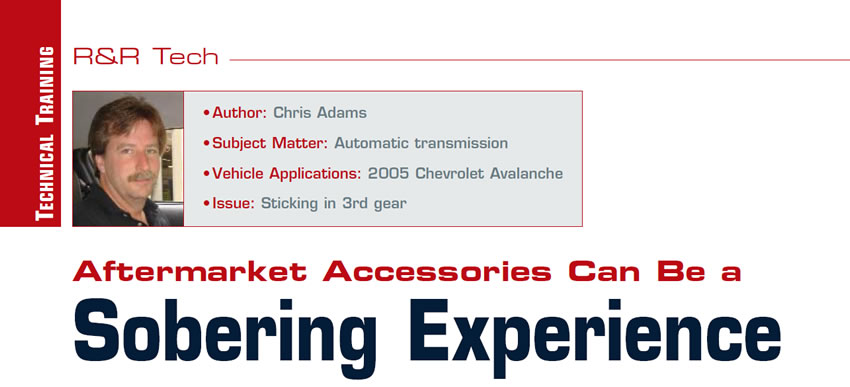If You Don’t Know How It Works, How Can You Work on It?
Manual transmissions – whether three-speed or 16-speed units, rear- or front-wheel-drive – all work the same way. To be usable, the engine’s torque must be broken down into manageable steps or speeds. The result is a set of gear ratios allowing the vehicle to go from a dead stop to road speeds fuel-efficiently. The first-gear ratio will be high enough numerically to move the vehicle’s weight from stop to go. The next sets of gears will have descending numerical ratios to increase vehicle speeds smoothly while increasing fuel efficiency.
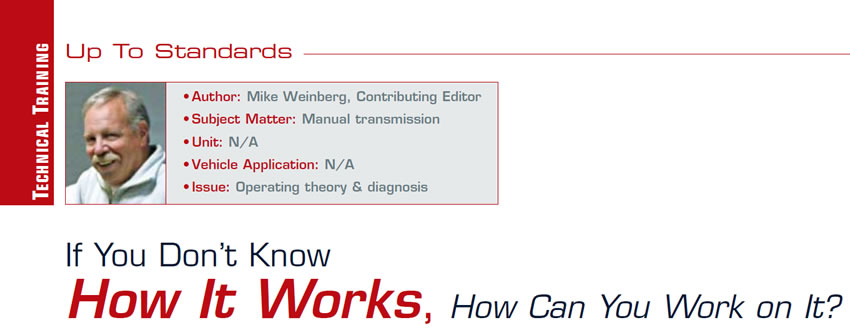
AB60E 6-Speed (A750/761E big brother)
With all the changes swirling around the transmission world today, it’s no wonder that manufacturers look to benefit from “economy of scale.” Millions of dollars and much time are devoted to developing a completely new transmission platform. Once a new transmission design is implemented and proven successful, it only makes sense to enhance and expand upon it.
Take the case of the Aisin-produced A750E five-speed RWD, which was launched in 2003 for Lexus and Toyota. The Aisin handle for that model is TB-50LS. The A750E was a departure from not only the A340 family of transmissions but even the A650E five-speed. This new design was developed with an eye on the future.
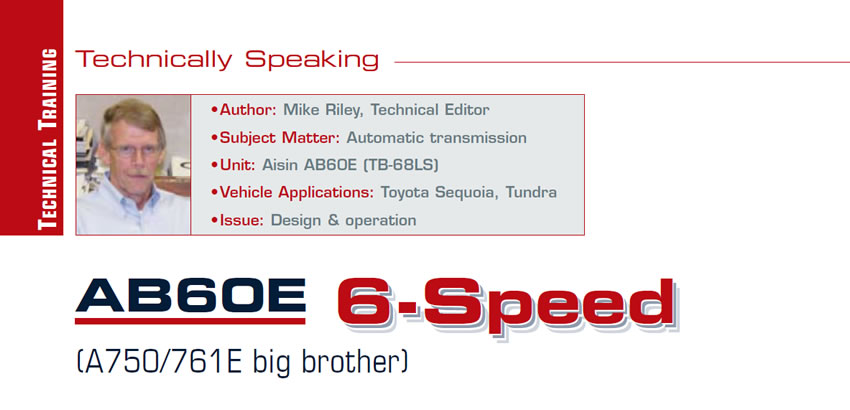
Toyota U151E-U250E Vacuum testing
From the TASC Force we reprint a series of in-depth test instructions for checking the serviceability of valve bodies.

Power of Collective Wisdom Solves ‘Fretting Corrosion’
Now, at this stage I believed that my customer was a victim of either high-mileage fretting corrosion or high-mileage fracturing of cold-solder joints. Either way, “smacking” was the big clue that can temporarily solve either of these issues, and I believed I had a good shot at repairing my customer’s minivan, even though I could not get it to act up. At this point in my detective work, I felt like an attorney attempting to prosecute a murder case without the benefit of a murder weapon – or a body. Luckily, there are precedents for convicting when there is no body, just as you and I have repaired a vehicle or two without locating a tangible root cause.
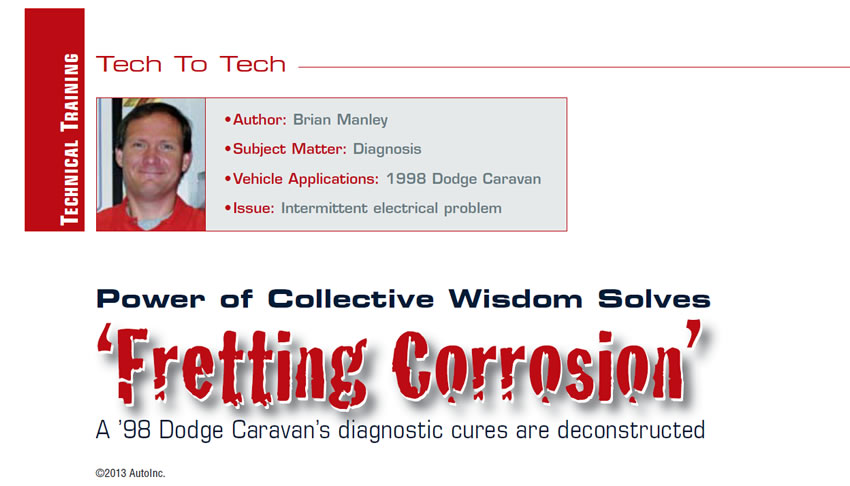
We’re Doing it Wrong – the World is Flat
The industry is nearing a crossroads. We’re not quite there yet, but it’s coming soon.
It’s the perfect storm: new technologies in transmissions, new buying motives and habits among vehicle owners, new media and marketing options, new competitive forces from general-repair shops and consumer-focused new-car dealers, new this, new that.

November 2013 Issue
In This Issue
4L60-E 3-4 clutch failure: Another contributing factor
4T40E 1-2 shift condition: Read between the lines
Crankshaft sensor or flex plate: Which item is it?
Axle-seal leaks: Choose the right seal
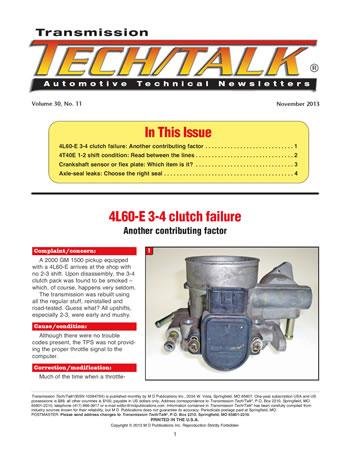
Is the Tail Wagging the Dog?
Do you know how many leads you got last week? How many were lost? How many were converted into a sale? How many units did your builder build last week? What was your average parts percentage on major repairs? If you cannot answer core questions like these, the tail is probably wagging the dog at your shop.

Subaru Lineartronic: Not all CVTs are east/west
The CVT that was developed for Subaru is a major departure from all other transverse-mounted CVTs. This new-design unit, called a Lineartronic, hit the streets in 2010. To say that a Lineartronic is a monster would be an understatement. The unit could probably fit right into a Sherman tank. There is also a difference in design between gas and diesel applications. In addition, to understand the power flow would be akin to “the ankle bone is connected to the shin bone, the shin bone is connected to the …” etc.)
Controlling Parts Costs
“Are you out of your mind, Art? I’m not giving my checkbook to the builder!”
That is what I was told by an old-school owner when I was the general manager of his three transmissions shops back in the day. We were arguing back and forth trying to figure out how to get our parts costs in line, like many of you nowadays. His position was that it was, and always has been, the manager’s responsibility to control our parts costs. My position was that we should change that policy and make the rebuilder responsible for which parts we buy and make the manager responsible for selling the repair for enough to reach our parts-percentage goal. That policy change would make the manager accountable for the sales amount and the builder accountable for the parts amount. The installers worked for the builder, and all R&R parts were approved by the builder. The new policy, in effect, would have employees share accountability as a team in an effort to reach our parts-percentage goal.

Vacuum Testing Ford 5R55W/S
From the TASC Force we reprint a series of in-depth test instructions for checking the serviceability of valve bodies.

Not Getting ‘Skunked’
This week I got one of those in from a customer who was recommended to come here by another shop that had given up on finding the problem. After several attempts and customer drop-offs, the shop couldn’t get the problem to occur. The vehicle was a 2007 Ford F-150 pickup, and the problem was it would occasionally blow the brake-lamp fuse. The circuit seemed simple enough, not like a spider-plant circuit we sometimes run into.
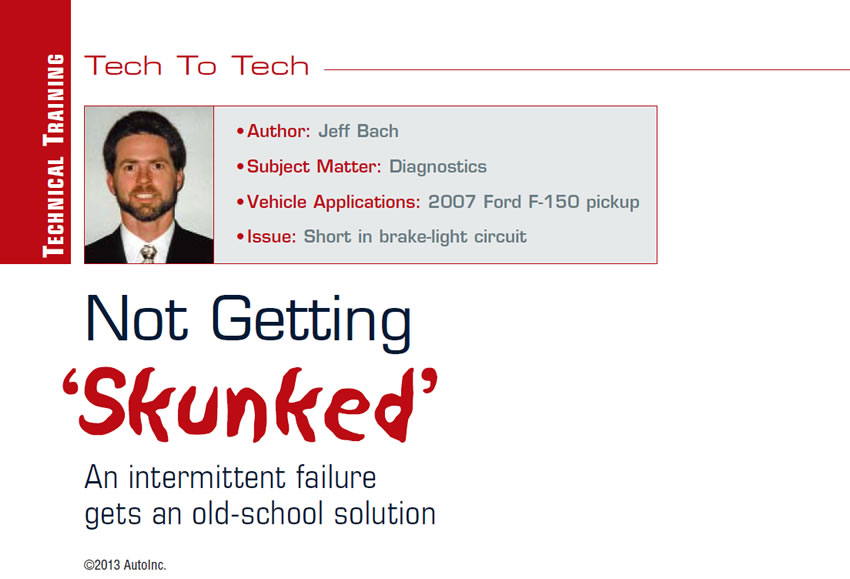
Aftermarket Accessories Can Be a Sobering Experience
Recently a 2005 Chevrolet Avalanche came into one of our shops with the customer concern of the transmission sticking in one gear intermittently, and the Service Engine warning light illuminating. When I went to start our pre-diagnostic evaluation I grabbed the scan tool and went out to the vehicle, only to notice that it had a “Smart Start” ignition interlock device installed (Figure 1).
At this point I decided to hook up the scan tool and check for codes before driving the vehicle, and I pulled codes P0740, P0753, P0758, P0785 and P2761. On the basis of these codes, we advised the customer that he had an electrical issue and we would need some additional diagnostic time. The customer agreed and left the vehicle with us to diagnose.
